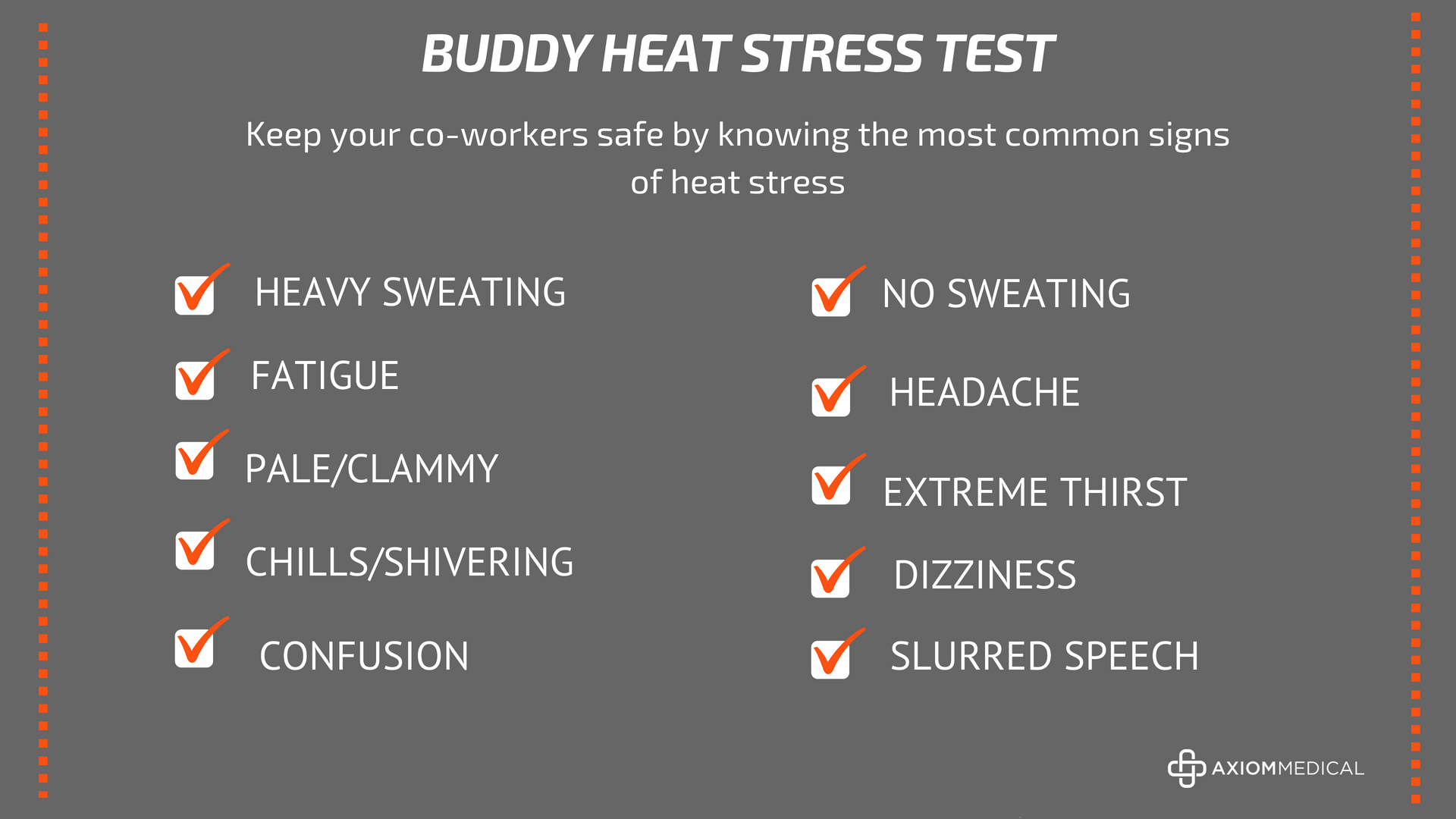Heat stress can lead to a serious injury on the job when precautions aren’t taken.
According to the Centers for Disease Control and Prevention, heat stress causes over 650 deaths each year. This makes up for more deaths than hurricanes, lightening, floods and tornado related deaths combined!
Workers most commonly experience heat related illness and injury because of three situational factors: infrequent work and rest breaks, nutrition and their working environment.
However, by paying attention to early signs and symptoms, you can beat heat illness altogether because many heat related illness and death can be preventable!
Hydrating Tips for a Safe + Sound Summer
Here are some simple ways to keep your body in check, along with a heat stress test employees can use to assess and keep their co-worker’s safe:
Hydrate for a hot work day ahead. Staying properly hydrated is one of the simplest and smartest things you can do for yourself while working in the summer heat!
Start with a glass or two of water the night before, and for every hour you’re working outside, drink 3 cups of water and 1 cup of a sport’s drink.
Take a rest break in the shade. Dizziness or fainting can happen when you’re standing in place for a long period of time in the heat.
Take 10-15 breaks in a cool area where you can recharge and refuel (drinking coconut water is a great choice, as it will supply your body with essential vitamins and minerals).
Eat nutritious mini meals. Along with drinking plenty of water, you need to nourish your body with the hydrating foods that support the needs of a hot work environment.
Cucumbers, kiwi and watermelon are great hydrating foods (work them into a fruit salad for a mid-morning snack!)
Snow peas and celery also have a high amount of water and vitamin C.
Salmon will support hypothalamus, the part of your brain that controls thirst, hunger and body temperature.
Buddy up! Another simple way to stay safe and sound when working outdoors is by doing a mandatory heat stress test – in pairs!
Refer to our free stress test tool so employees know what to look for, asking employees to assess one another once a shift:

If your co-worker are experiencing any of the above symptoms, don’t hesitate.
Reach out to a supervisor and report it immediately.
Move to a nearby shaded area, and instruct them to drink slow, small sips of cold water until help has arrived.
A Simple Solution for Heat Related Illness or Injury
Axiom offers health solutions that make sense for employees, and the employer.
Experience any of the above heat related symptoms, and all you have to do is contact 877.502.9466. Within seconds, you’ll have access to a registered nurse who will guide your employees through the injury management process.
Contact us to learn more!










